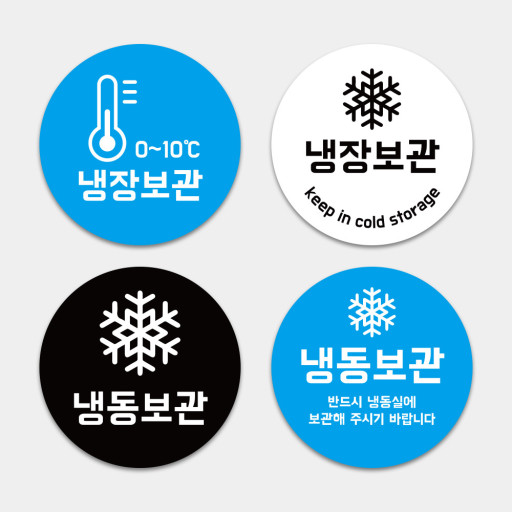
냉장과 냉동 보관은 음식의 신선도를 유지하고 부패를 방지하기 위한 가장 일반적인 방법입니다. 그러나 두 가지 보관 방법은 영양소 손실에 미치는 영향이 다릅니다.
■ 냉장 보관
냉장 보관은 음식의 온도를 0~5℃로 유지하는 방법입니다. 이 온도에서는 대부분의 박테리아의 성장이 억제되므로 음식의 신선도를 유지하는 데 효과적입니다. 그러나 냉장 보관은 음식의 영양소 손실을 일으킬 수 있습니다.
냉장 보관으로 인해 손실될 수 있는 영양소는 다음과 같습니다.
비타민 C: 비타민 C는 수용성 비타민으로 열과 산소에 의해 쉽게 파괴됩니다. 따라서 냉장 보관 시에도 비타민 C가 풍부한 채소나 과일은 밀폐 용기에 담아 보관하는 것이 좋습니다.
비타민 B1, B2: 비타민 B1, B2는 수용성 비타민으로 열, 산소, 빛에 의해 쉽게 파괴됩니다. 따라서 냉장 보관 시에도 비타민 B1, B2가 풍부한 식품은 밀폐 용기에 담아 빛을 차단한 상태에서 보관하는 것이 좋습니다.
비타민 A: 비타민 A는 지용성 비타민으로 열과 산소에 의해 비교적 안정적입니다. 그러나 냉장 보관 시에도 비타민 A가 풍부한 동물성 식품은 장기간 보관하면 손실될 수 있습니다.
■ 냉동 보관
냉동 보관은 음식의 온도를 -18℃ 이하로 유지하는 방법입니다. 이 온도에서는 대부분의 박테리아의 활동이 완전히 멈추므로 음식의 신선도를 장기간 유지할 수 있습니다. 또한, 냉동 보관은 영양소 손실을 최소화하는 데 효과적입니다.
냉동 보관으로 인해 손실될 수 있는 영양소는 다음과 같습니다.
비타민 C: 비타민 C는 냉동 보관 시에도 열과 산소에 의해 쉽게 파괴될 수 있습니다. 따라서 냉동 보관 시에도 비타민 C가 풍부한 채소나 과일은 짧은 시간 동안 냉동하는 것이 좋습니다.
비타민 A: 비타민 A는 냉동 보관 시에도 열과 산소에 의해 비교적 안정적이지만, 장기간 보관하면 손실될 수 있습니다. 따라서 비타민 A가 풍부한 동물성 식품은 짧은 시간 동안 냉동하는 것이 좋습니다.
■ 냉장과 냉동 보관의 주의점
냉장과 냉동 보관 시에는 다음과 같은 주의점을 지켜야 합니다.
냉장 보관 시에는 음식을 밀폐 용기에 담아 보관하여 산소와 빛을 차단해야 합니다.
냉동 보관 시에는 음식을 얇게 썰어 보관하여 해동 시간을 단축해야 합니다.
냉동 보관한 음식은 1~2회 정도 해동하여 섭취하는 것이 좋습니다.
냉동 보관한 음식은 해동 후 다시 냉동하지 않는 것이 좋습니다.
이러한 주의점을 지켜 냉장과 냉동 보관을 적절히 활용하면 음식의 신선도를 유지하고 영양소 손실을 최소화할 수 있습니다.
Refrigeration and freezing: Difference in nutrient loss and precautions
Refrigeration and freezing are the most common ways to keep food fresh and prevent spoilage. However, the two storage methods have different effects on nutrient loss.
Refrigeration
Refrigeration is a method of maintaining the temperature of food at 0-5℃. At this temperature, the growth of most bacteria is inhibited, making it effective in maintaining the freshness of food. However, refrigeration can cause nutrient loss in food.
Nutrients that can be lost due to refrigeration include:
Vitamin C: Vitamin C is a water-soluble vitamin that is easily destroyed by heat and oxygen. Therefore, it is a good idea to store vegetables and fruits rich in vitamin C in airtight containers even when refrigerated.
Vitamin B1, B2: Vitamin B1 and B2 are water-soluble vitamins that are easily destroyed by heat, oxygen, and light. Therefore, it is a good idea to store foods rich in vitamin B1 and B2 in airtight containers and block out light even when refrigerated.
Vitamin A: Vitamin A is a fat-soluble vitamin that is relatively stable against heat and oxygen. However, even when refrigerated, animal foods rich in vitamin A can be lost if stored for long periods of time.
Freezing
Freezing is a method of maintaining the temperature of food below -18℃. At this temperature, the activity of most bacteria is completely stopped, so the freshness of food can be maintained for a long period of time. In addition, freezing is effective in minimizing nutrient loss.
Nutrients that can be lost due to freezing include:
Vitamin C: Vitamin C can also be easily destroyed by heat and oxygen during freezing. Therefore, it is a good idea to freeze vegetables and fruits rich in vitamin C for a short period of time.
Vitamin A: Vitamin A is relatively stable against heat and oxygen during freezing, but it can be lost if stored for long periods of time. Therefore, it is a good idea to freeze animal foods rich in vitamin A for a short period of time.
Precautions for refrigeration and freezing
The following precautions should be observed when refrigerating and freezing:
When refrigerating, food should be stored in airtight containers to block out oxygen and light.
When freezing, food should be sliced thinly to shorten the thawing time.
It is a good idea to thaw and consume frozen food 1-2 times.
It is not advisable to refreeze frozen food after thawing.
By following these precautions and using refrigeration and freezing appropriately, you can maintain the freshness of food and minimize nutrient loss.

'섭생.영양' 카테고리의 다른 글
| 오이의 성분, 효능, 성장기 하루 성장속도 (0) | 2024.07.12 |
|---|---|
| 마늘 성분, 효능, 효능 극대화 섭취법 (0) | 2024.07.10 |
| 채소, 생으로 먹을까? vs 익혀서 먹을까? (0) | 2024.07.09 |
| 상추의 성분, 효능, 섭취 주의점 (0) | 2024.07.09 |
| 아몬드 주요 성분, 효능, 먹는 방법 ? (2) | 2024.07.08 |